So, this is what it's like to stay up for 24 hours! I'm back home but will post more soon about the official Navy activities on Thursday and our special side jaunt on Friday.
As Jeff alludes, the Navy did an outstanding job on the ceremony Thursday. We were once again thankful to help with little things. Not the least of which was polishing Wahoo's actual bell.
After the ceremony we spoke to Rear Admiral Joseph A. Walsh ComSubPac. His keynote address was wonderful. After a little preliminary scheming, Jeff asked Admiral Walsh if it would be possible for us to tour the Sub Base on Friday. He assured us it was and set us up the next day. Jeff, Bryan Mackinnon, his three children and I spent Friday afternoon touring the buildings of the base and drinking in the history. Details and photos to follow as well.
In the meantime, here is Admiral Walsh's speech given to the families and guests of the Wahoo Remembrance ceremony on the 64th anniversary of the loss of USS Wahoo (SS-238):
USS Bowfin Museum
Pearl Harbor, Hawaii
October 11, 2007
Good afternoon ladies and gentlemen. First, I would like to say thank you to all of the family members of the Wahoo crew who have come so far to honor their loved ones. Aloha and welcome.
Counsel General Binns from Australia, Counsel General and Mrs. Kunikata from Japan, thank you very much for attending today’s ceremony. You honor us with your presence.
I would also like to thank and recognize the World War II Submarine Veterans with us here today to honor their brothers lost on WAHOO. It is always humbling to be in the presence of the men who represent the soul of our submarine force.
As I thought about today’s ceremony I started to think quite a bit about who were these men who crewed the USS Wahoo. They were in every way, identical to our submarine veterans with us here today. They were men from what Tom Brokaw has termed The Greatest Generation. They were men who were raised during the hardships of the great depression. They had few material things. Growing up, my father never missed an opportunity to tell my brothers and sisters and I that he was 9 years old before he got his first new pair of shoes because he always got his brother’s hand me downs. They were skinny, because they never had too much food and a piece of candy or a coca-cola really was a treat. But they also had a deep sense of honor. They believed there was a right way and a wrong way to lead your life. They certainly did not want to fight a world war. General Colin Powell once wrote that we are a nation of reluctant warriors and he is absolutely right; but Pearl Harbor changed all of that. Admiral Yamamotto of the Japanese Navy, who had lived in and was educated in the United States, got it right when he said of Pearl Harbor, that he feared all they had done was to awaken a sleeping giant and fill it with a terrible resolve. He knew that when you combined the character and anger of the American people with our industrial might, that that was an enemy he did not want to fight.
So that’s who made up the crew of the USS Wahoo. That is who we are here today to pay tribute to. To those men and to their families, that we may finally provide some closure by way of this remembrance ceremony.
Wahoo was led by her captain, CDR Dudley W. Morton, revered by his crew and by submariners still today, simply as Mush. Mush Morton was a great teacher and a tenacious fighter. Prior to his first war patrol as Commanding Officer he got his crew together and said, “I am glad to have every one of you aboard Wahoo personally. What I have to say can be stated simply. Wahoo is expendable. We will take every reasonable precaution, but our mission is to sink enemy shipping. If anyone doesn’t want to go along, just see the yeoman. I am giving him verbal authority to transfer anyone who is not a volunteer. Nothing will ever be said about your remaining in Brisbane.” That was his philosophy and that was the way he fought his ship. Historians will argue the exact numbers but Wahoo sunk at least 20 ships totaling greater than 60,000 tons.
As I said, Mush Morton was a great teacher as well. He had a great Executive Officer, some guy named O’Kane, or something like that. What Mush was capable of, perhaps better than anyone in the submarine force was to visualize the relative motion picture on the surface; how that picture was changing as the ships moved and his submarine moved. If you’re not a submariner you may have a hard time understanding how difficult that is to do and how critical it is to getting your boat in the right spot to shoot a torpedo. Today, we still evaluate every one of our Commanding Officer on their ability to understand the relative motion picture. Mush was the master and what made him really amazing was that he could do all in his mind. He didn’t want to be distracted by looking out the periscope so he had his exec, Dick O’Kane man the scope. It was this ability to get his ship to the firing point that made Wahoo so effective, and by teaching those skills to O’Kane he made O’Kane equally successful in his own right, as skipper of Tang. Today if we make an error in the relative motion picture we can compensate using the speed of the nuclear submarine, but in World War II if you made an error you didn’t get the shot. That’s why some of our submarines would come home from a war patrol with all of their torpedoes or they would shoot from too far away and never get a hit. If we give the teacher, Mush Morton, some of the credit for the student O’Kane’s success together their two ships sunk more than 44 vessels at more than 160,000 tons and they were together awarded the Medal of Honor, 7 Navy Crosses, and 4 Silver Stars. In terms of ships sunk they were ranked #1 and #2 from amongst all the skippers in World War II. If that doesn’t define effectiveness I don’t know what does.
Wahoo departed Pearl Harbor on her 7th and final war patrol on 9 September 1943. She was assigned to operate near the Kurile Islands in the Sea of Japan. Although there has always been theories about what happened on her final patrol, for the past 64 years we never really knew. Last year, thanks to the Russian Federation Navy and the Japanese Maritime Self Defense Forces we now know where the Wahoo and her crew lay and the circumstances of their final fight.
Submarining is a brotherhood. That is something not well understood by many people; even within our own Navy. How we live, how we fight and how we may someday die has created a culture unique in the seafaring world. A fighter pilot lives or dies based on his individual air combat skills. Our surface brethren are oftentimes reliant on other ships they’re operating with; some to provide protection against submarines, others to provide protection against missiles or enemy aircraft, but a submarine is the most independent of ships. Particularly during World War II they operated in the enemy’s backyard. The crew was reliant only on themselves. They absolutely depended on each other, on each crewmember to do his part. Every submarine sailor is a damage controlman. It is the very basis of the submarine dolphins we wear so proudly. On a submarine, everyone from the Captain to the most junior sailor eat the same food, we breath the same stale air, everyone forgoes a shower for a month and everyone lives in the same metal tube; and should we die, we almost always all die together. It’s rare that there are any survivors when we lose a submarine. And so the bond is incredibly strong.
Today, we pay tribute to one such submarine crew. We attempt to bring closure to all that they accomplished with their ship and with their lives. There is comfort knowing where their final resting place is. I think, if they could talk to us, they wouldn’t have it any other way. They are at peace together just as they fought together.
Three months ago, on the 28th of June, our last surviving submarine Medal of Honor recipient, RADM Gene Fluckey passed away. Like Mush Morton he was and is an American hero. I think one of Adm. Fluckey’s last requests is very telling and speaks to the bond between submariners. And his request was that he wanted a deployed US submarine to bury a portion of his cremains in the western pacific, which of course, we will be honored to do. Gene Fluckey, The Galloping Ghost of the China coast wants to be laid to rest where he did the most important work of his life, just as the crew of USS Wahoo did.
Wahoo is a legend, and you should all be assured and be proud that the legend of Wahoo lives on. It is passed from one generation of submariners to the next. As a young Ensign when you enter your first trainer at submarine school, on the wall there is a big plaque with CDR Morton’s entreaty to his exec LCDR O’Kane…”Tenacity Dick…stay with the bastard till he’s on the bottom.” Capt. Jim Ransom, the Director of Operations here at Subpac signs every email with “Tenacity Dick…stay with the bastard till he’s on the bottom.” Our submarine ethos is the legacy of the men of Wahoo, a legacy that will live as long as there are US submarines.
In a few minutes you will witness a submarine force tradition; the tolling of the bells. It is something I have heard many times during my career, and no matter how many times I hear it, it always fills me with emotion. Being here today and having the opportunity to meet so many of you…the loved ones these men left behind…makes the tolling even more meaningful. Thank-you all very much for attending today’s ceremony and honoring the crew of USS Wahoo. Thank-you.
This Sounds Like It's From The Onion...
12 years ago


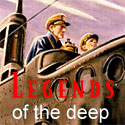
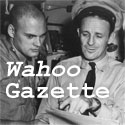
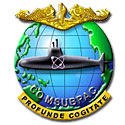

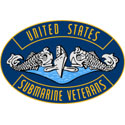
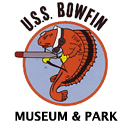
0 comments:
Post a Comment